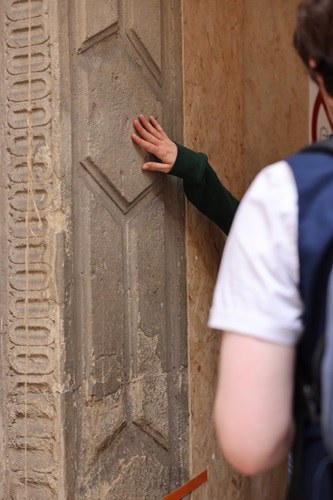A mathematical point of view

Normally, when visiting a city of art, we adopt the point of view of history, or that of art history, with which it is natural to look at the monuments in front of us, inserting them into the cultural context of reference. It is not, however, the only possibility: our goal is to reveal how a mathematical training allows us to look at art - here understood in a broad sense, to include architecture, sculpture, painting, music, etc. – with other eyes.
This new look allows us to broaden the range of interpretations we can give: we may think of it as a lens for a mental telescope pointed in the direction of objects or phenomena of which we have only a partial understanding. Adding a new lens to our telescope, in addition to those it already has, can improve or modify the level of reading of the works, artists and the cultural context in which they operated. It is quite obvious, for example, that mathematics is an essential technical tool for disciplines such as architecture and engeneering. Much less evident is that it can represent a "creative" tool, capable of providing the artist with new inspirations and original solutions. Yet, this vision is shared by many artists, from different eras and disciplines, and it is interesting to discover this point of view in works which we usually only look at from another perspective.